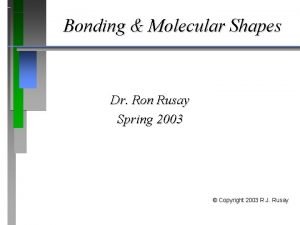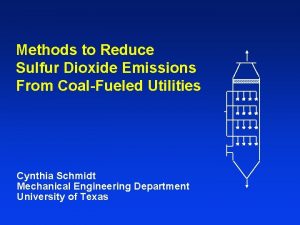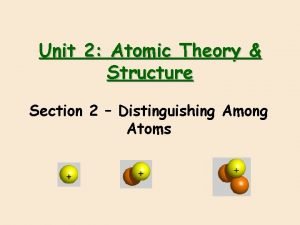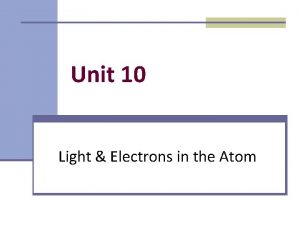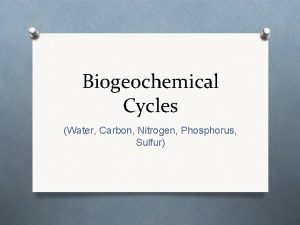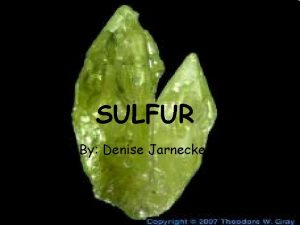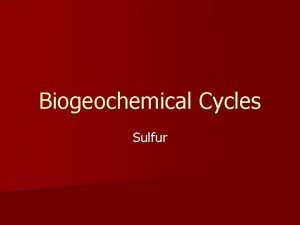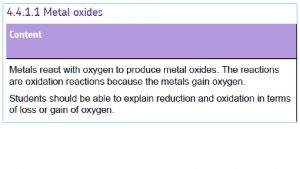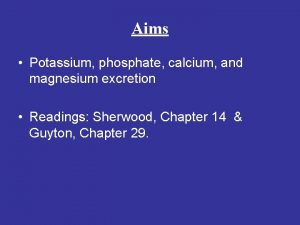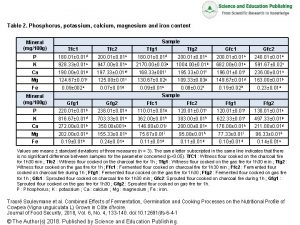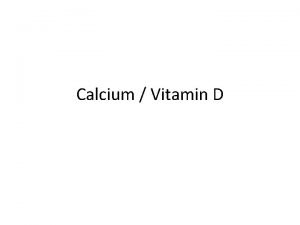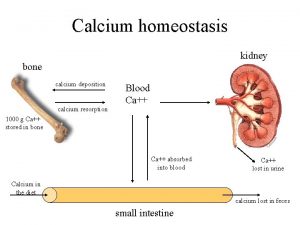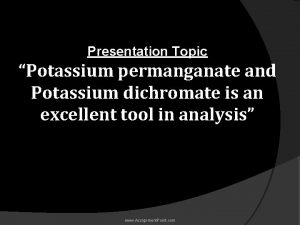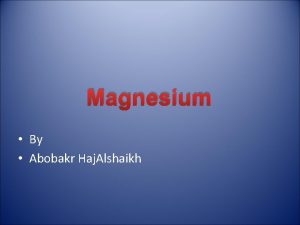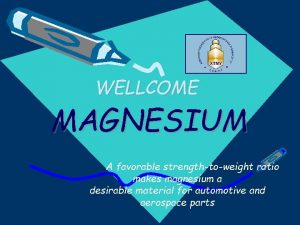Cycles Presentation Calcium Magnesium Potassium Sulfur Cycles Alexis















- Slides: 15

Cycles Presentation Calcium, Magnesium, Potassium, Sulfur Cycles Alexis Koopmann, Rachel Liu, Emily Hirst

Calcium Cycle: - Calcium is primarily present as rock, minerals, or as structural calcium built into mineral crystal lattices of soil particles and is not readily available. Calcium can also be added as fertilizer, lime or by-products. Water can carry calcium into the soil through weathering and natural dissolution.

Calcium Cycle 1. Calcium fertilizer is produced. (Organically sourced or manufactured byproduct) 2. Calcium fertilizer is applied. (Weathering or dissolution occurs) 3. Temporarily held on CEC or tied up as soil mineral. (CEC: Cation Exchange Complex) 4. Plant Uptake Occurs (Calcium is an essential nutrient for crops, it insures proper cell formation and cell division - a few of the many benefits of calcium) 5. Plants Decay or are Digested (Animals digest other plants)


Calcium Cycle: Fun Facts - In the plant kingdom, calcium is referred to as a secondary macronutrient because of the amount a plant needs relative to nitrogen, phosphorous and potassium. Calcium joins magnesium and sulfur in this class of secondary nutrients. - In plants, calcium is required for cell rigidity, as well as normal mitosis, and membrane function. Calcium has some similar functions in microorganisms and mammals as well as plays an important role in bone structure.

Magnesium Cycle - Magnesium is found in high concentrations in limestone and marble. - As rock particles weather over time, the magnesium particles are then slowly released into the soil. - Plants take in nutrients from soil, including magnesium. - Once plants decompose, Magnesium particles are released into the atmosphere in a non-gas form.


Potassium Cycle ~Potassium forms in crystalline structures, like mica and feldspar. ~Then it becomes Exchangeable K, and enters the soil as ions. ~Plants then absorb this, Potassium is an essential plant nutrient and is required in large amounts for proper growth and reproduction of plants. ~When humans harvest this, the potassium isn’t replenished. ~When the plants decompose, fertilizer is added to the soil, and animals can even add potassium back into the cycle.

Potassium Fun Facts ~Known to improve drought resistance. ~Protein and starch synthesis in plants require potassium as well. Potassium is essential at almost every step of the protein synthesis. In starch synthesis, the enzyme responsible for the process is activated by potassium. ~Activation of enzymes – potassium has an important role in the activation of many growth related enzymes in plants.


Sulfur Cycle ~Most of the earth's sulphur is tied up in rocks and salts or buried deep in the ocean in oceanic sediments. Sulphur can also be found in the atmosphere. It enters the atmosphere through both natural and human sources. Natural, for instance volcanic eruptions, or decaying organisms. ~When sulphur enters the atmosphere through human activity, this is a consequence of industrial processes. . ~All these particles will settle back onto earth, or react with rain and fall back onto earth as acid deposition. ~The particles will than be absorbed by plants and are released back into the atmosphere, so that the sulphur cycle will start over again. ~Plants absorb sulphur when it is dissolved in water. Animals consume these plants, so that they take up enough sulphur to maintain their health.

Sulfur Fun Facts ~Sulfur is an important nutrient for organisms, being a key ingredient of certain amino acids, proteins, and other biochemicals. ~Plants satisfy their nutritional needs for sulfur by gathering simple mineral compounds from the environment.


Human Impact/Dependence ~Calcium, sodium, magnesium, and potassium (along with phosphorus and sulfur) are sometimes added to the list of macronutrients because they are required in large quantities compared to other vitamins and minerals. ~Humans are dependent on these macronutrients for growth, and dependent on the plants that uses these minerals for food, growth, and reproduction. ~By harvesting these elements for fertilizer and other uses, humans deplete this non-renewable resource over time. ~It’s important to replenish the mineral quantities, or soil will become barren to new plant growth.

Sources: - Source: http: //www. eco-gem. com/calcium-cycle-agriculture-infographic/ - Source: westada. org/cms/lib 8/id 0190474 - Source: http: //www. smart-fertilizer. com/articles/potassium-in-plantsm - Source: www. britannica. com - Source: http: //www. lenntech. com/sulphur-cycle. htm#ixzz 4 Kwg. BTv 9 G - Source: http: //www. encyclopedia. com/topic/Sulfur_cycle. aspx
 Corrosive sulfur passivator
Corrosive sulfur passivator Sulfur trioxide lewis structure
Sulfur trioxide lewis structure How to reduce sulfur dioxide
How to reduce sulfur dioxide How many neutrons in sulfur 33
How many neutrons in sulfur 33 What is the orbital diagram for sulfur
What is the orbital diagram for sulfur Pengertian siklus sulfur
Pengertian siklus sulfur Sulfur readily forms the following monatomic ion:
Sulfur readily forms the following monatomic ion: Humans alter the sulfur cycle by
Humans alter the sulfur cycle by Mixture separated by distillation
Mixture separated by distillation Sulfur extraction
Sulfur extraction Daur sulfur
Daur sulfur Sulfur ground state electron configuration
Sulfur ground state electron configuration Electron configuraton
Electron configuraton Limestone sulfur dioxide
Limestone sulfur dioxide Uses for sulfur
Uses for sulfur Lithium sulfur batteries
Lithium sulfur batteries

